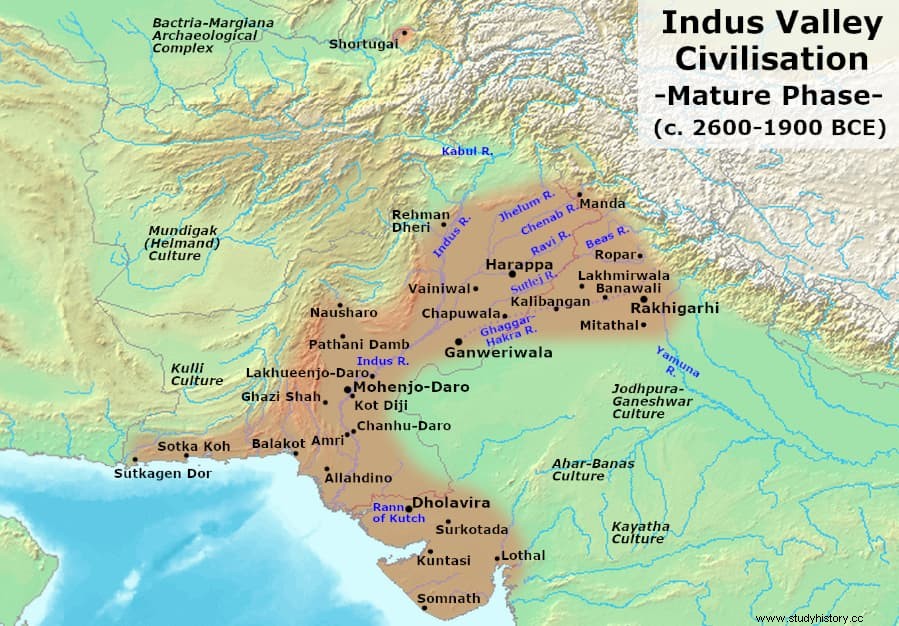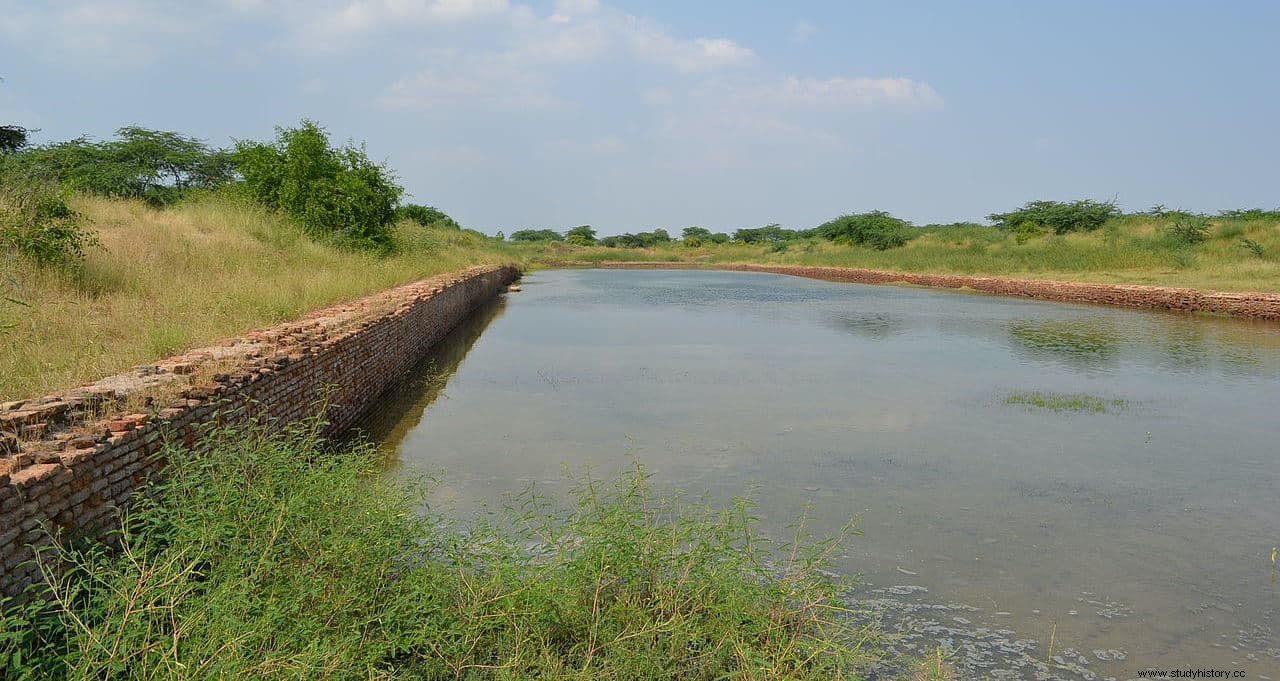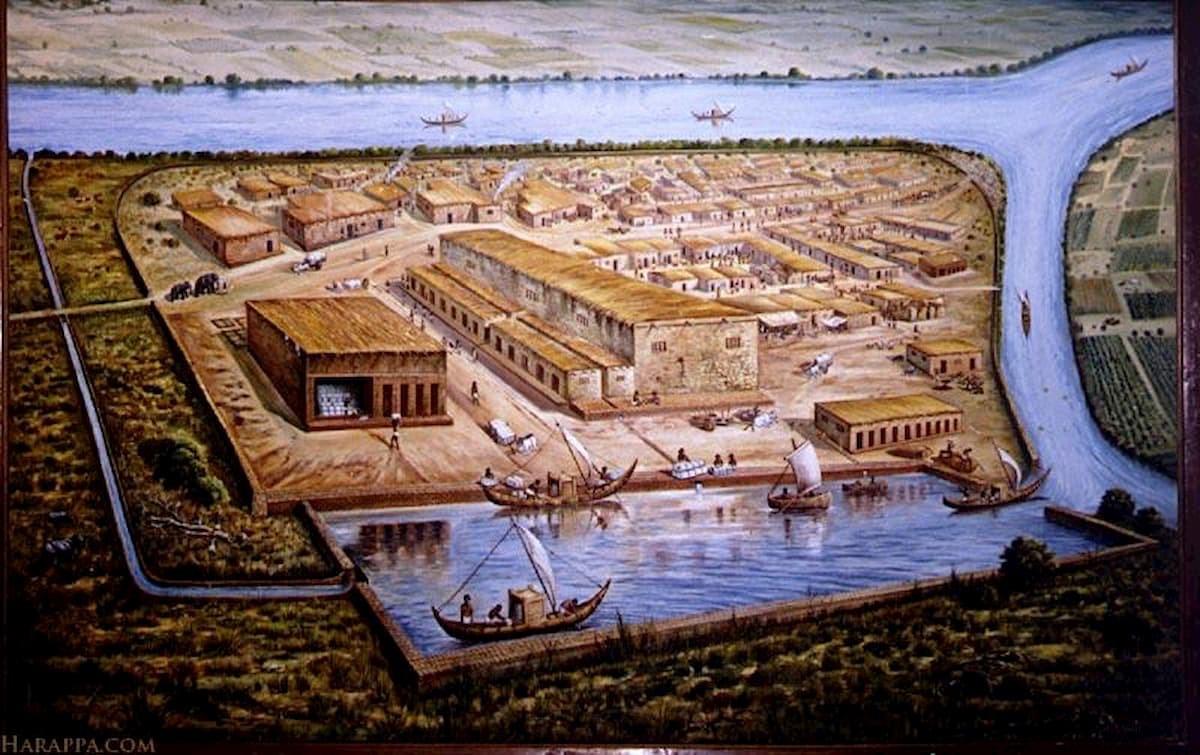This large rectangular structure, filled with water, may look like a reservoir, but it is actually an old wharf, and one of the oldest in the world. It is situated on the site of the ancient city of Lothal, about 85 kilometers south of Ahmedabad, in the state of Gujarat, in India. Lothal is one of the few sites within the Indus Valley Civilization that is accessible from India.
Lothal is believed to be at least 5,000 years old and was the only port city of the Indus Valley Civilization. Lothal Dock connected the city to the Sabarmati River, which was an important trade route between the Harappan cities of Sindh (present-day Pakistan) and the Saurashtra Peninsula. At that time, the Kutch desert was part of the Arabian Sea.

The pier is about 200 meters long and about 35 meters wide. During high tides, the pier would have filled with seawater allowing ships and boats to move out of the yard.
In fact, Lothal's location was ideal for a dock because the Gulf of Jambat has the largest tidal range and ships can be dumped through tidal flow into the river's estuary.
The pier also featured a wooden gate closure that could be lowered at the mouth of the outlet to retain a minimum amount of water in the basin to ensure buoyancy at low tides.

The warehouse, which was central to the city's economy, was built on a raised platform to protect goods from flooding. A ramp led directly from the dock to the warehouse to facilitate loading. Despite elaborate precautions, it was the floods that caused the city's decline.
Like most Harappan cities, Lothal had a remarkable town planning, with a fortified quadrangular layout intersected by wide streets running east-west and north-south, lime-plastered pavements, a sophisticated drainage system, rows of platforms bathroom and even a bead factory.
When the site was first excavated in 1955, some archaeologists argued that the basin was too small to hold ships and carry much traffic, and that the dock was actually an irrigation reservoir.

But the discovery of marine microfossils, salt and gypsum crystals has provided decisive proof that the structure once contained seawater. Today, the site is not linked to the gulf by a waterway because the river has since changed its course.
Lothal survived long after the Indus Valley Civilization's main settlements, Mohenjo-Daro and Harappa, had been abandoned. But storms and frequent flooding caused immense destruction, and the city became uninhabitable and was eventually abandoned.
This article was published on Amusing Planet. Translated with permission.
